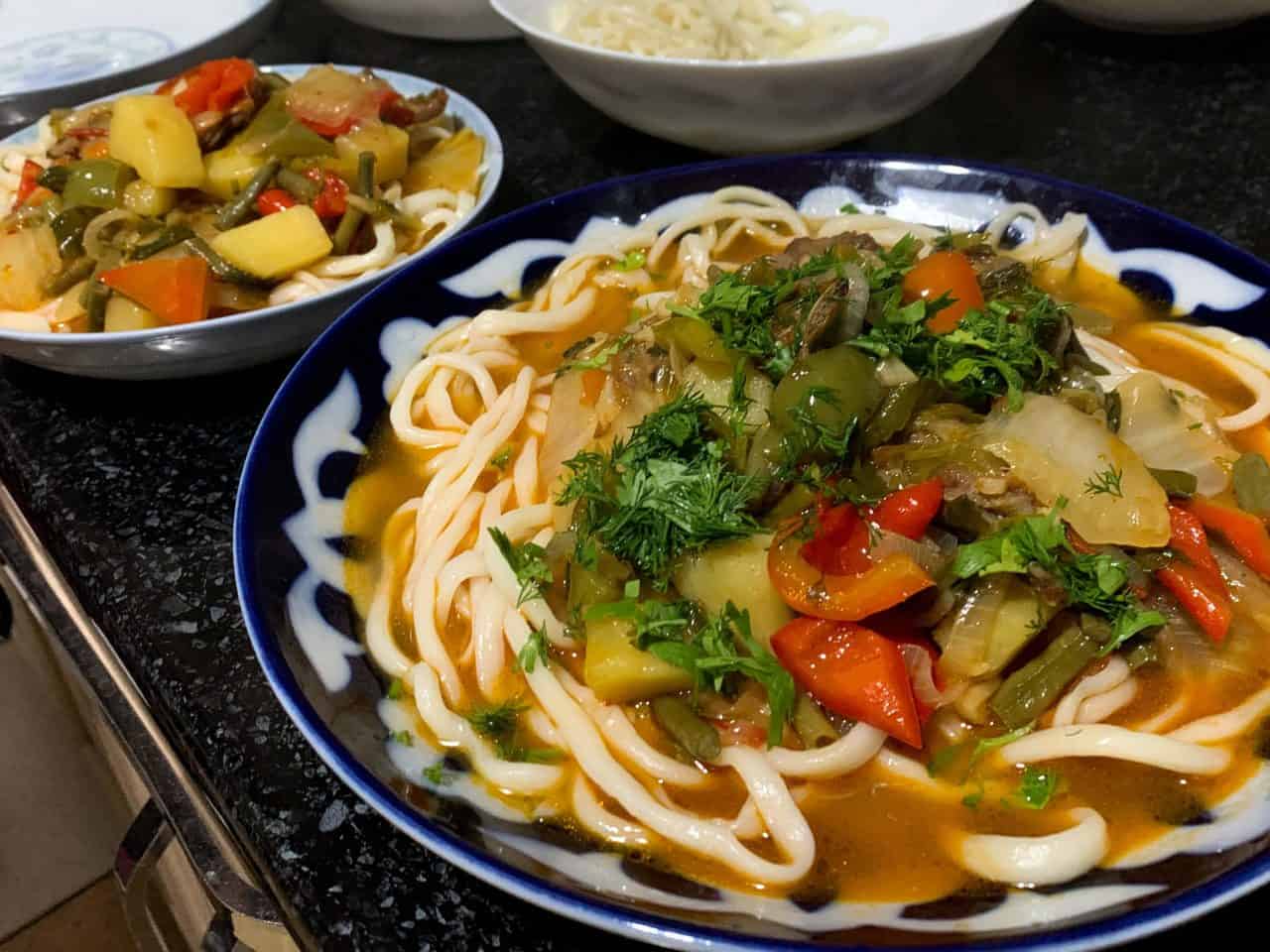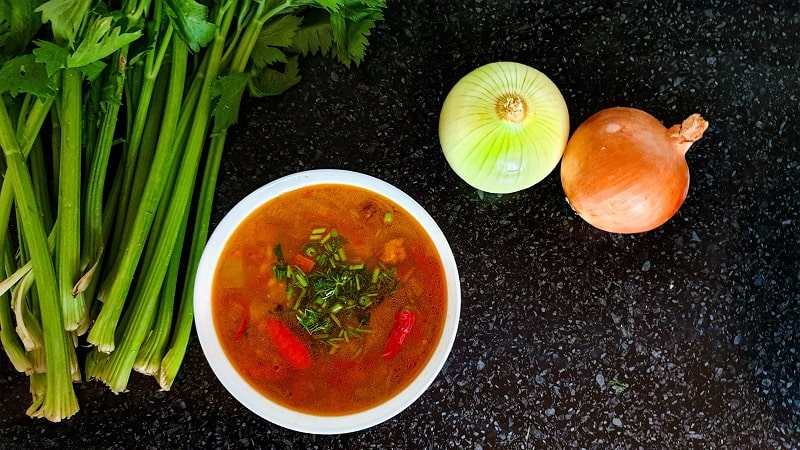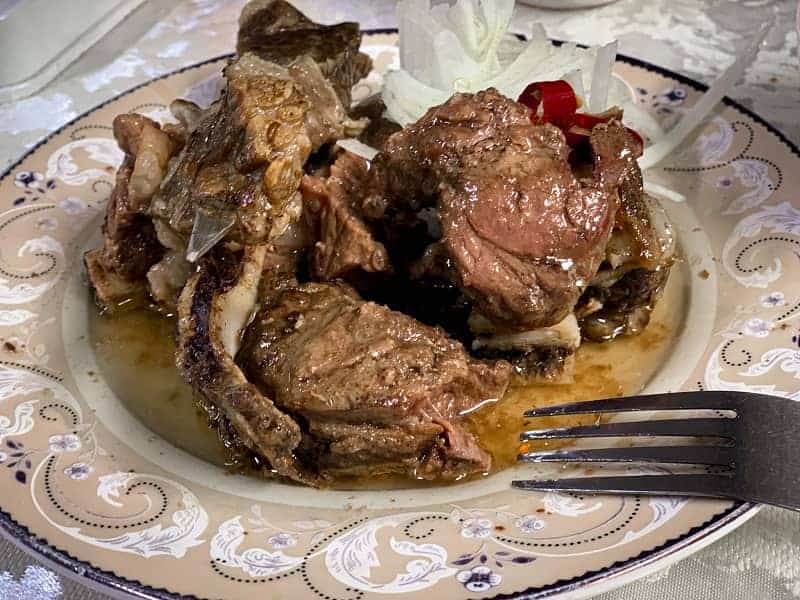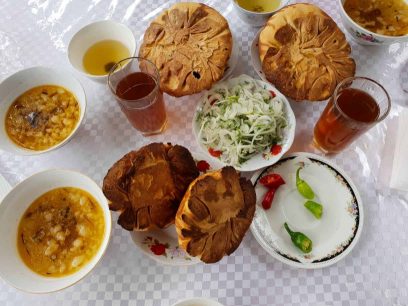Osh Food: What to Eat While in Osh?
Osh Food
Across Kyrgyzstan, Osh is known for having the most delicious food in the country. It is no surprise, as Osh has combined the best culinary traditions of several cultures over thousands of years. It is the place where the Uzbek diversity of ingredients and Kyrgyz generosity for meat have merged together. As a result, the food in Osh is diverse in terms of ingredients and nutrition and is served in huge portions. Moreover, all of these food fantasies come with reasonably cheap price. Therefore, in order to make your visit a bit yummier, here is the list of Osh’s must-eat dishes. Sharpen your teeth, loosen your belt, and prepare yourself for the upcoming foodgasm!
Across Kyrgyzstan, Osh is known for having the most delicious food in the country. It is no surprise, as Osh has combined the best culinary traditions of several cultures over thousands of years. It is the place where the Uzbek diversity of ingredients and Kyrgyz generosity for meat have merged together. As a result, the food in Osh is diverse in terms of ingredients and nutrition and is served in huge portions. Moreover, all of these food fantasies come with reasonably cheap price. Therefore, in order to make your visit a bit yummier, here is the list of Osh’s must-eat dishes. Sharpen your teeth, loosen your belt, and prepare yourself for the upcoming foodgasm!
1. Osh Plov
For those who are not familiar with this culinary masterpiece, plov is a dish made of rice, meat and several vegetables and spices. These ingredients go through frying, boiling and steaming processes. Plov is available throughout Central Asia, and while the ingredients and cooking techniques are all similar for the most part, Osh plov is different and superior to other versions (Yes, I said it!!!). It is made of devzira rice, a special type of rice grown only in Uzgen and yellow carrot (exactly, yellow). In terms of spices we use only salt and cumin. Other minor ingredients like check pees chickpeas and sheep fat are optional.
The best way to taste it is by ordering one kilo of plov, which can feed from four to six people easily. You can order also plov by portions in few places, but bear in mind that the taste will differ from the one served straight out of the cauldron.
2. Samsa
Samsa is a dish found throughout Central Asia, the Middle-East and the Indian subcontinent. Generally, it is simply made of dough stuffed with meat and vegetables. In Osh you mostly find samsa filled with meat and onion, potato, or pumpkin. However, the cooking technique for Osh samona is quite different. Nowadays, while most of our neighbors use electric ovens, Osh style samosa is still baked in tandoor. Tandoor refers to the traditional oven made of clay. It is believed that the clay and exposure to the open fire along with proper temperature and pressure inside the tandoor enrich the samosa with a unique flavor.
Samosas in Osh vary in size. The tiniest samosa (also named ‘parmuda’) costs 10-15 som per piece (21 cents); small sized – 50 som (70 cents), average sized – 70 som ($1), the big one – 100 som ($1.5) and the mega-sized costs 140 som ($2). Most places serve small and average sized samosa. If you are planning to make a meal of it, I recommend that first order just one piece and sample it. This way you will feel how many you need to get full. Wanna go big? Go ahead and challenge yourself with mega samosa – one piece can easily feed all but the hungriest of Central Asian men
3. Manty (Central Asian dumplings)
Manty is a Central Asian variation of dumplings. Their consistency is similar to samosa’s, however they differ in shape and unlike samosa they are steamed on water (and rarely fried). In most cases, manty is served with a tomato-pepper sauce or with sour cream.
Have you tried ravioli? Then you can imagine how mayda-manty looks and tastes. It is a miniature dumpling filled with mashed potatoes, what makes it an excellent option for vegetarians. However, unlike ravioli, this dish is cooked on water steam just like manty. Mayda-manty are tiny in size, that’s how they got their name which is literally translated as mini-manty. WARNING: this dish can’t be found anywhere else in the world except Osh. Maida-manty is also super cheap, a half kilo portion costing only 70 som.
4. Shashlyk (kebab)
You may know this dish as ‘kebab’. The term shashlyk originates from turkic word ‘shash’ which stands for the roaster. Shashlyk will be adored by meat lovers as it is literally meat on a stick. This dish is truly special due to grilled taste and the tenderness of the meat. The tenderness comes from an overnight marinating process. The meat is cut in cubes and put into a high-acidity compound made of vinegar, onions and herbs. The next day, the marinated meat is threaded to skewers and roasted (grilled) over a coal fire.
What makes sampling shashlik in Osh even more amazing is the variation of its types. You can order shashlik made of beef, lamb, chicken, duck and rabbit. Also, there is a variation of minced kebab, made of grounded meat, onions and spices.
5. Lagman


6. Mastava
Mastava is a thick soup made of rice, meat, and vegetables. There are two variants of this dish – boiled and fried. The boiled mastava is considered to be dietary. It is mostly prescribed to people who are on a strict diet or recovering from illnesses. The fried mastava, on the other hand, is more common and served in many cafes.
The ingredients (meat and vegetables) of a fried mastava go through a frying process before being filled with water and added by rice. As a result, you get a hearty soup that will unload your body after the culinary hospitality of Central Asians.
If you visit Osh and decide to enjoy this soup, try it with a spoon of sour cream. It will add an unusual and refreshing flavor to your mastava.
Many cafes serve mastava every day, and its price ranges from 1 – 1.5 US dollars.

7. Kuurdak




